Spain has given us quite a few idols in motorsport, and many years before the world started following the career of Fernando Alonzo and Carlos Sainz, another Spaniard was already conquering hearts and minds in Formula One, his name was Alfonso de Portago, but the fans affectionately called him “Fon”.
He was a member of the Spanish aristocracy with the noble title of “Marquis”, which stands between Duke and Earl. Just like any other member of the nobility, he had lots of time and money to enjoy the good things in life but racing was his true love.

His career in motorsport was, unfortunately, very short (1953-1957), not allowing him to leave a more profound mark in racing. He could easily be considered the driver with the most exotic name ever, his full name was: Alfonso Antonio Vicente Eduardo Angel Blas Francisco de Boria Cabeza de Vaca y Leighton Carvajal y Are, (Cabeza de Vaca means, literally, Head Cow). To make things easier and assure everyone would be aware of his nobility, he liked to be addressed as Marques de Portago.
The Need for Speed was constantly flowing in his veins. When he was studying to become an aircraft pilot, Fon bet with a friend that he could fly his small airplane under a bridge. He won the bet but the authorities canceled his course and forbid him to ever get his license.
Portago was an athlete, a horse rider, and also a member of the Spanish bobsleigh team that competed in the 1956 Winter Olympics. He wasn’t a snobbish guy, always dressed frugally and according to his friends, whatever he did in life was for love, not for showing off. Fon was married with two kids but that never prevented him to act like a true Latin lover, having many love affairs throughout his life.
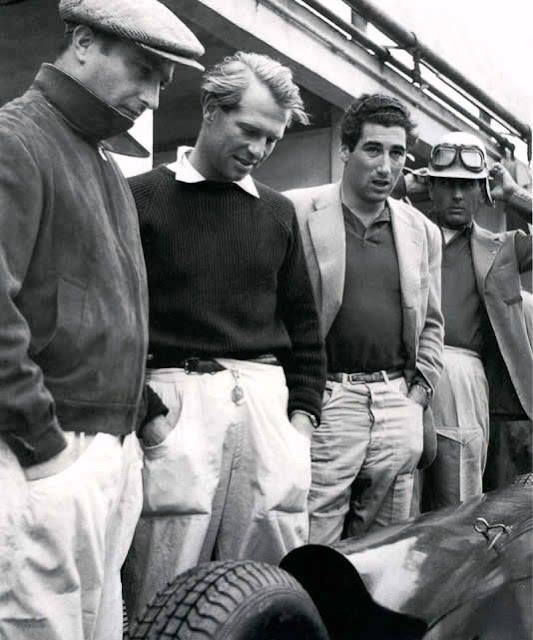
Alfonso, during his racing career, was more deeply involved with Ferrari, but it was a complicated relationship. Enzo liked the Marquis more as a customer than as a team member. Even though Fon was invited to be part of the Ferrari Formula-One team for the 1956 season, replacing Luigi Musso, when he could not finish the season.

Fon drove for Ferrari in six races and his best performance was Silverstone. He was in third, behind Fangio and Moss, when he was called back to the pits, and the team manager asked the Marquis to give his car to his teammate Peter Collins. In a situation like that, the two drivers would share the points at the end of the race. Portago complied with the orders, visibly not happy. At lap 80, another Ferrari driver, Eugenio Castelotti, came to the pits and retired from the race after being involved in a minor collision. Fon asked if the car was still drivable and the mechanics answered “barely”. To Portago, that was good enough, he jumped into the battered Ferrari and left the pits like a maniac. (picture above)
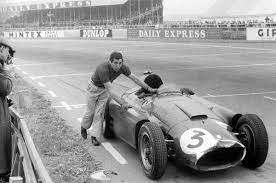
The Ferrari died close to the finish line after only 12 laps. Portago removed his goggles, lit a cigarette, and waited until the end of the race. When Manuel Fangio received the checkered flag, the Marquis pushed the crippled Ferrari, crossing the finish line and ending the race in 10th place. That was classic Portago, but Enzo didn’t like the stunt, for him, it was shameful for the brand and unnecessary.
For the 1957 season, the relationship between Fon and Enzo Ferrari continued to be complicated. The Marquis kept writing letters to Maranello, asking for a position as a driver. Enzo, sarcastically, wrote back, sending pictures of the crashes, involving the Spaniard.
Portago finally found his way back to Ferrari when in May 1957, he was called to once again replace Luigi Musso, who had fallen ill and was unable to keep driving. His first assignment was to be part of the team competing in the legendary Mille Miglia. The Scuderia from Maranello had a superb team that year, the Marquis would be driving with Peter Collins, Piero Taruffi, Wolfgang Von Trips, and Olivier Gendebien.
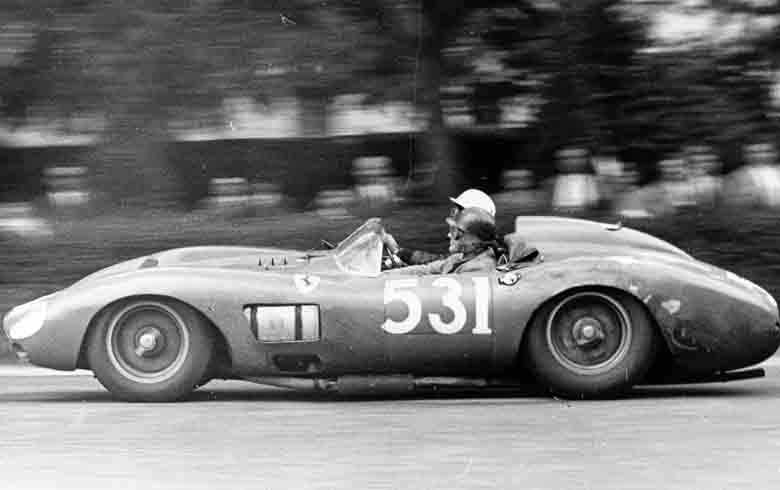
The race was the 24th edition of the Mille Miglia, it was held on May 11-12, 1957. It was also the Round 3 of the World Sports Car Championship season. Ferrari had the strongest team on the field with 15 cars, 5 from the official factory team, and 10 driven by privateers. Portago invited an old friend to be his navigator, the American journalist Edmund Nelson. They would have the privilege to be on board Ferrari’s newest prototype, the 335 S – number 531 (pictured above).
Mille Miglia
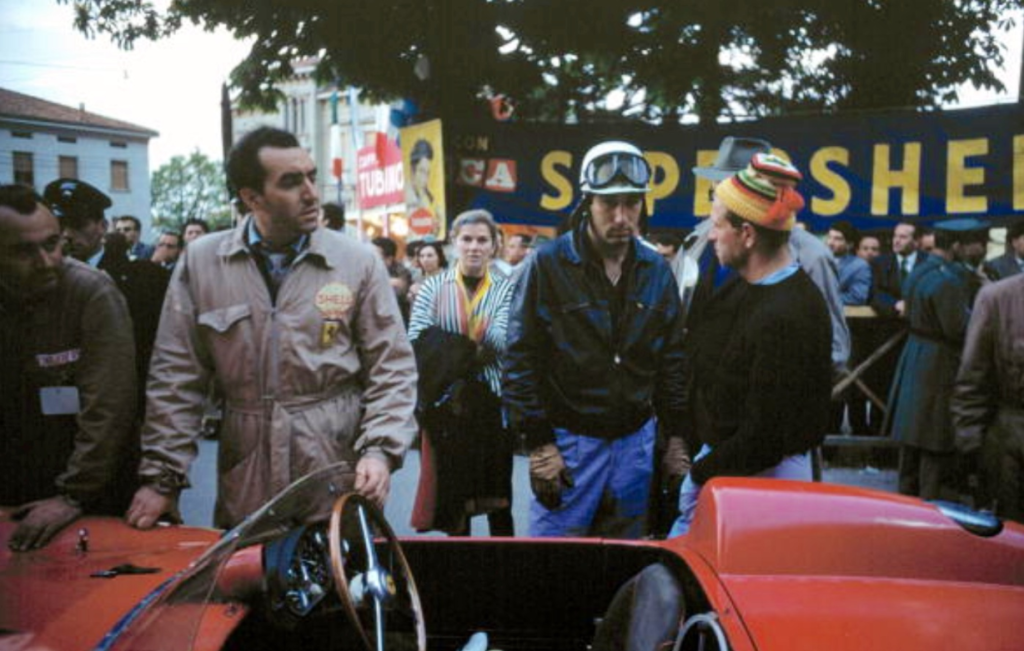
The Mille Miglia (thousand miles) was the most traditional and popular competition in the history of Italian motorsport. It took place on public roads and its format was close to the one used in rally, where the drivers race against the clock when driving from one checkpoint to the next.
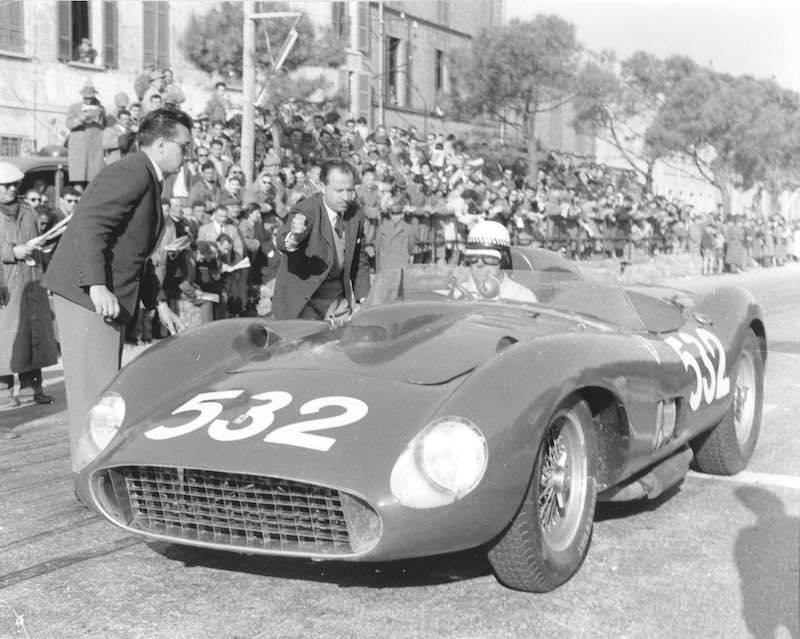
The competitors are released at one-minute intervals. Slowers cars go first, based on engine displacement, increasing the challenge of the drivers in faster cars. In a time with no internet, no cell phones, and very limited resources in communication, (we are talking about Italy in the 1950s) the organization came up with a very ingenious way to help the race marshals to calculate the time at various checkpoints, the number painted on the cars is related to the driver’s allocated start time. For example, the picture above shows Von Trips, at the wheel of his Ferrari, the number means he started the race at 5:32 am on May 12, Fon was released 1 minute before, his number was 531. The slower cars were released on the evening of May 11.
For that year, the chosen route was a round trip starting in the city of Brescia going to Rome, and back, totaling 992.332 miles, mostly on back roads. The Mille Miglia proved to be a very dangerous race, the roads are narrow, the turns are sharp and the pavement usually is not in prime condition. The slower cars starting at night had to deal with the darkness but usually, the road was free of traffic. The faster cars racing through the day had to deal with traffic, not only from other competitors but also from the locals, who didn’t care much about the orders to keep the roads free. Some Italian drivers dispensed the help of navigators, alleging they were familiar with those roads.
The Machine
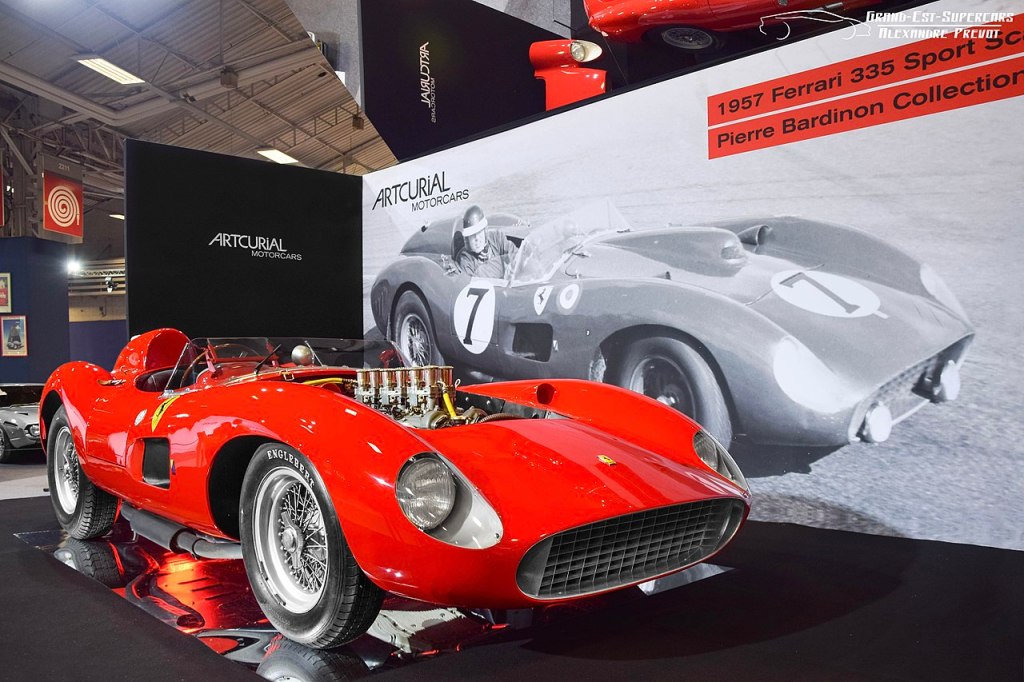
Maserati was working on a new prototype since 1954, the 450S and the company decided to follow the mantra: “There is no replacement for displacement” with a larger, 4.5 liter V12, rated at 400 hp, seriously outpowering Ferrari at the time.
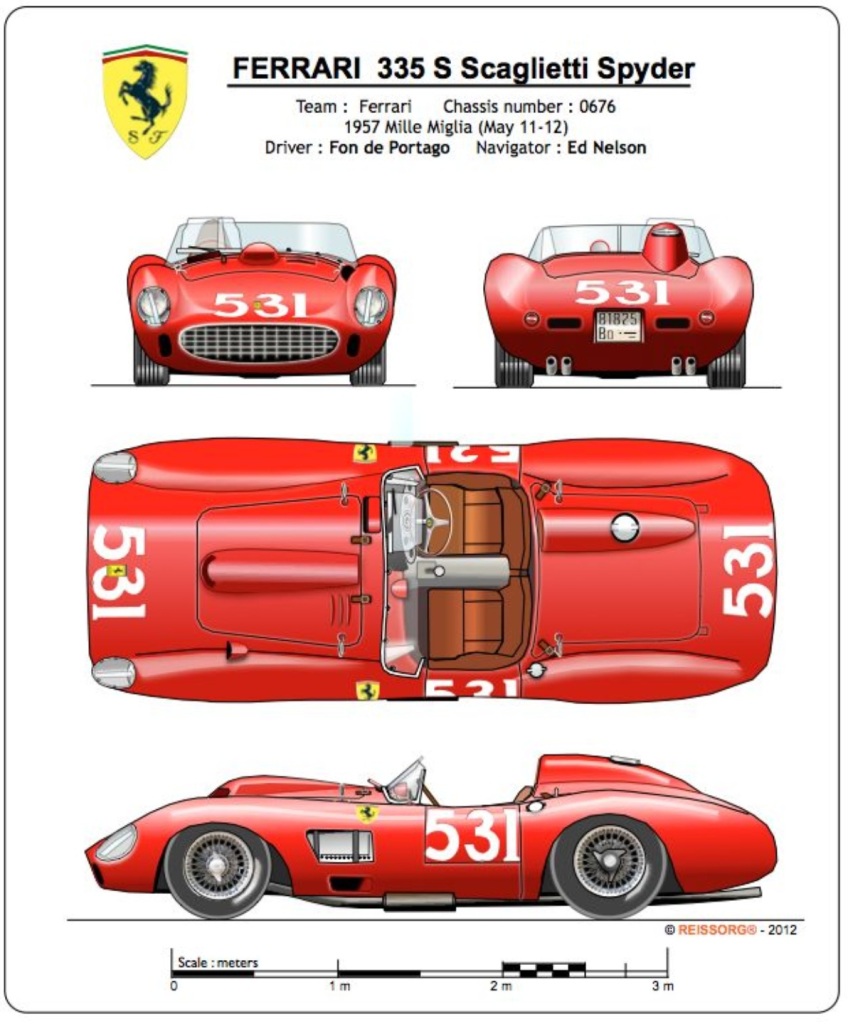
But the house of Maranello was truly committed to winning the Mille Miglia that year. The team brought to the race a brand-new prototype, the 335 S, also equipped with a larger engine than its predecessors, a 4 liter, V12 engine, fed by 6 Weber carbs, producing around 400hp.
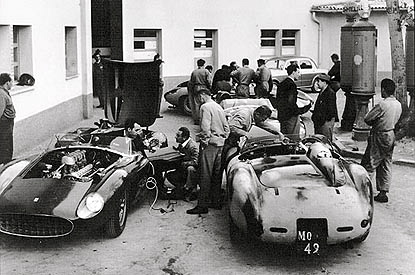
Ferrari was able to build only 4 prototypes in time for the Mille Miglia, which means one of the drivers would be racing with a “regular” production GT car. The team manager chose Oliver Gendebien to receive the less powerful GT Ferrari, based on his experience.
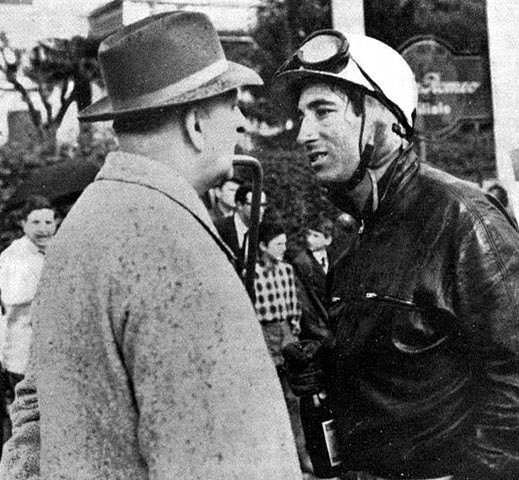
Enzo Ferrari was the kind of boss that never missed an opportunity to show disaffection toward the drivers he didn’t like. During a meeting, right before the start of the race, he said to Portago, -” I won’t be surprised to see Oliver (Gendebien) finishing the race ahead of you”. Fon didn’t say a word, he silently accepted the challenge.
The Race
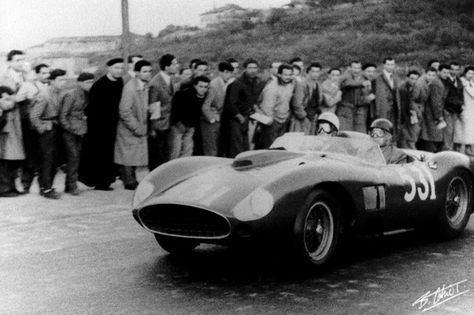
Only Ferrari and Maserati had entered work teams for the 1957 Mille Miglia, The peculiar characteristics of the race had prevented more factory-backed cars on the field. Maserati had big hopes for the new and powerful 450S prototype and brought two to the race, one for the experienced Stirling Moss and one for Jean Behra. But things started to go sour for the team when Behra crashed his car during a pre-race test, leaving Moss to fight the Ferraris all by himself. Maserati’s hopes completely faded away when Moss snapped the brake pedal of his 450S right after the start and was forced to retire.
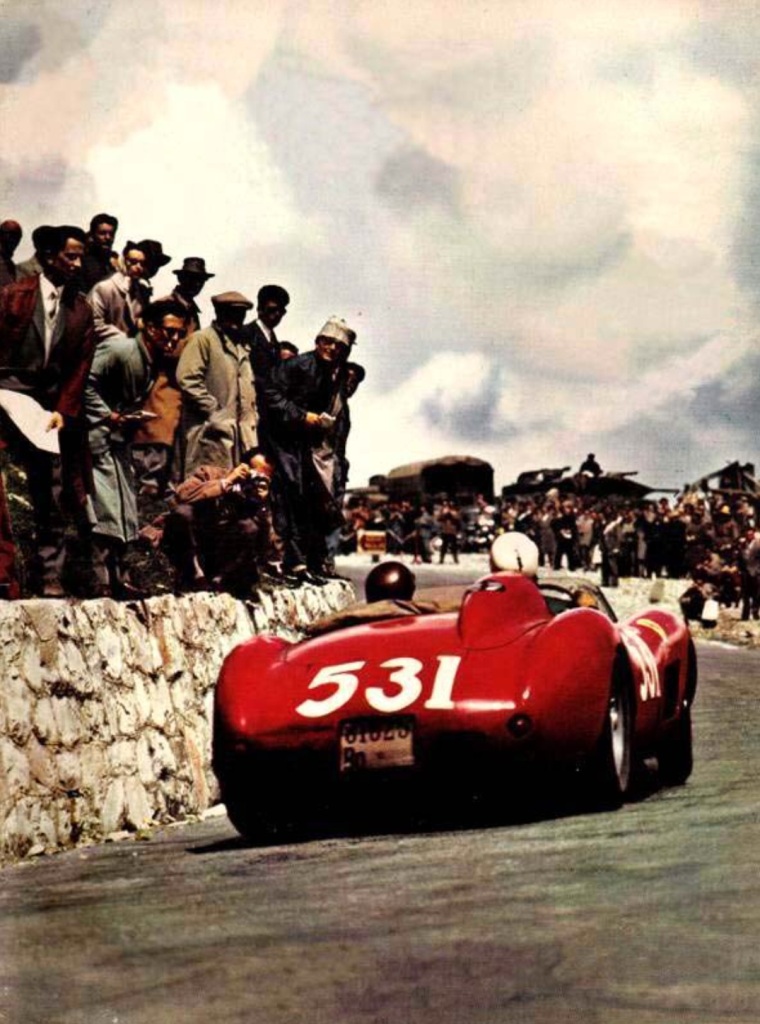
With the two Maserati prototypes out of the race, it seemed the competition would be smooth sailing for Ferrari. Portago arrived in Rome in 5th place and among the cheering crowd, he spotted the Mexican actress Linda Christian, with whom he had a love affair. He immediately pulled over to meet her, allowing his Latin lover persona to take over his duties as a race driver. After a little chat and a couple of kisses, the Spanish bon vivant left the city towards Bologna, where his car would receive the necessary repairs.
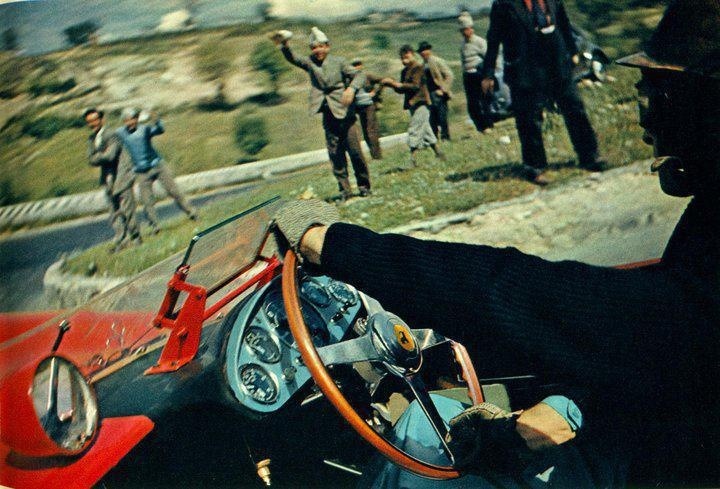
Once there, the mechanics found the front suspension was damaged and it would likely break before reaching Brescia. The team manager told Fon that his best option was to retire from the race to prevent an accident. The Marquis obviously ignored the advice, jumped in the car and left, determined to win the race.
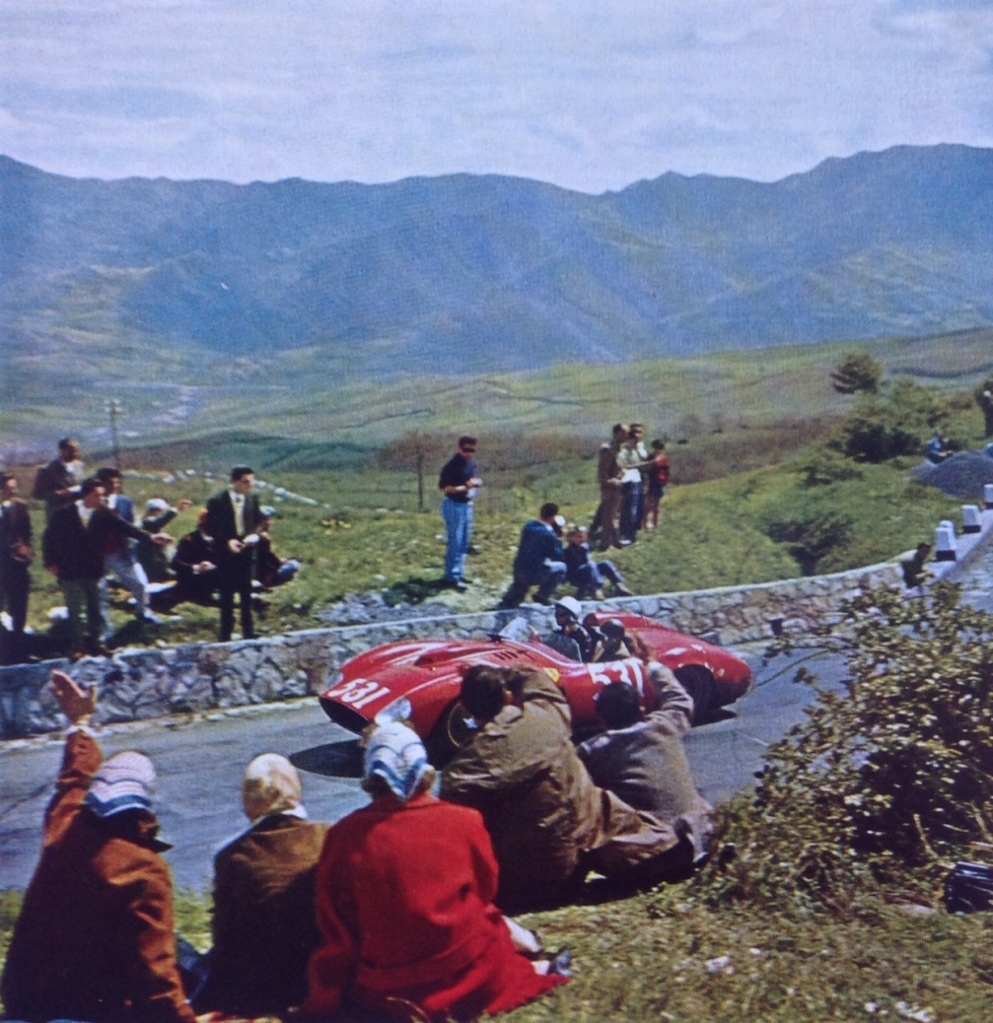
Driving hard on his way back, Portago passed Manfredini in Parma and Gendebien em Cremona, proving to Enzo that he wouldn’t let a slower Ferrari cross the finish line in front of him.
At one of the checkpoints, the race marshals told Portago that he was in third, with Taruffi in first and Von Trips in second. The Commendatore Enzo himself had instructed his drivers that, at this point, they should not fight for positions, in order to guarantee an easy 1-2-3 victory for the Scuderia.
If Portago had accepted the instructions, we will never know.
The tragedy
With only 30 km to the finish line, Fon was approaching the small town of Guidizzolo. He was going flat out on a straight, at 220km/h, when one of the front tires exploded. The Spaniard lost control of the car and hit a telephone pole, then it flew over a brook, plowing a few spectators in its way. The destroyed Ferrari bounced back, running over more spectators, and finally stopped upside down, in a ditch on the other side of the road.
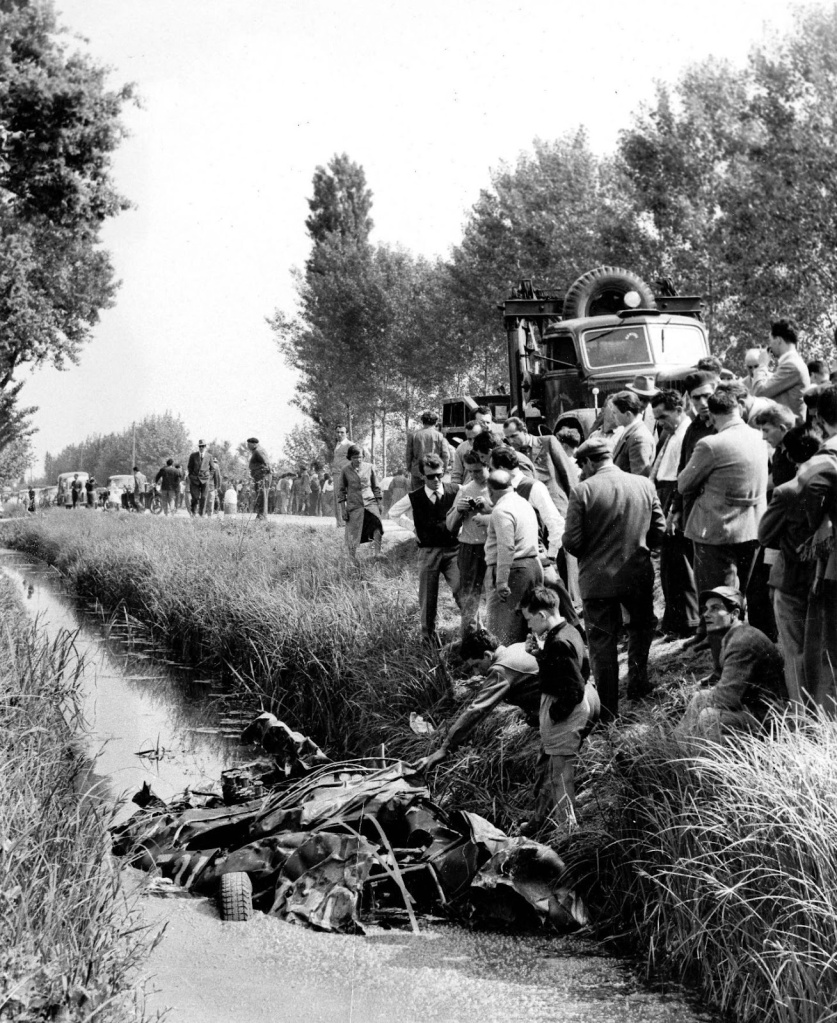
Fon and Nelson were catapulted from the car, after hitting the pole, the Spaniard died at the scene and his navigator perished a couple of hours later, at the hospital. Ten spectators also lost their lives, victims of the accident, among them five children.
The Italian government, shocked by the scope of the disaster, banned all motorsport activities on public roads, making the 1957 Mille Miglia the last one in history. Despite the tragedy, Ferrari finished the ill-fated race with a 1-2-3 victory, Piero Taruffi in first, Von Trips in second, and Olivier Gendebien in third.
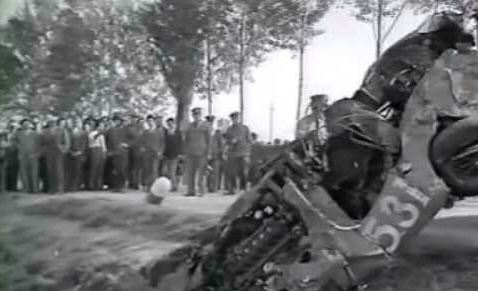
The official cause of the accident was a blown tire, but everyone knew the team allowed Portago to keep on driving with a damaged suspension, which was the probable culprit for the tire failure. Ferrari and the Belgian tire company Englebert were charged with manslaughter by Italian prosecutors in an investigation that dragged on for four and a half years.
Ferrari exhausted its financial resources fighting in court. The lack of cash brought the company to the negotiation table with Ford, in a deal that we are all familiar with. In the end, both companies were cleared of charges.
The doctors found in Portago’s leather jacket, his passport, and a note saying he was Catholic, and that in the event of any misfortune, a priest should be called.
The Marquis of Portago was seen by many as the perfect example of a playboy. He lived his life to the fullest but didn’t have time to prove himself as a competent race driver. He was passionate about Ferrari and was one of the few who dared to cross the Commendatore. He was 28 years old when he died.
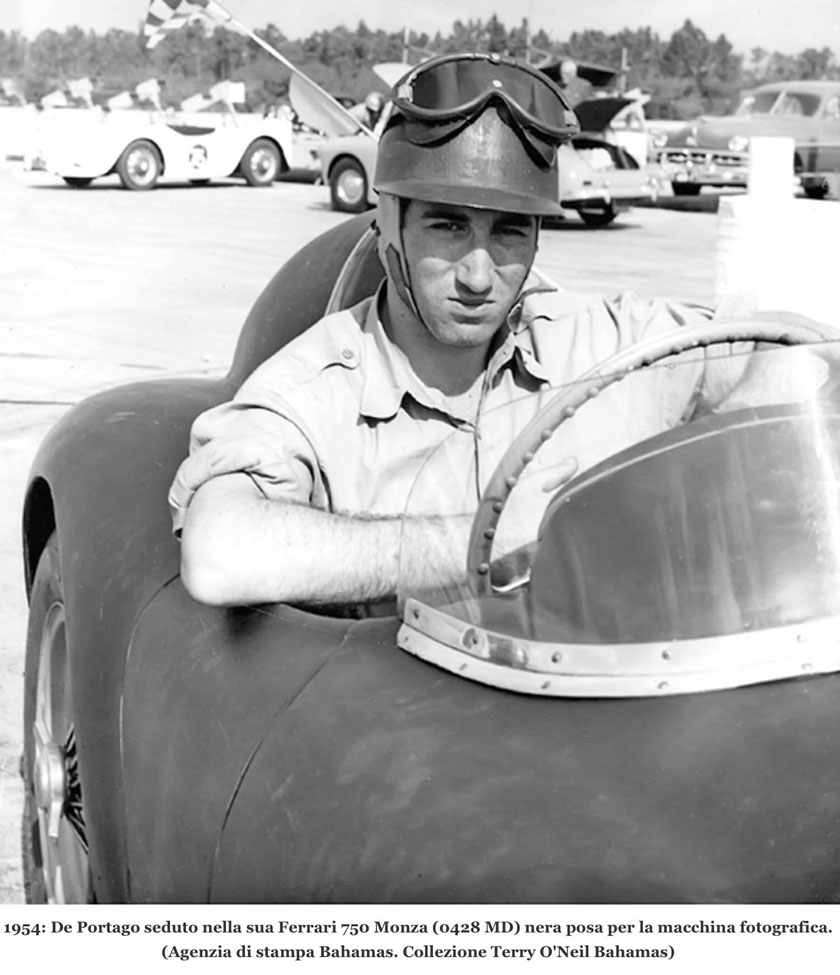
The Scottish race driver and automotive journalist Gregor Grant wrote a passionate description of the Marquis of Portago: “a man like Portago appears only once in a generation, and it would probably be more accurate to say only in a lifetime. The fellow does everything fabulously well. Never mind driving, the steeple chasing, the bobsledding, the athletic side of things, never mind being fluent in four languages. He could be the best bridge player in the world if he cared to try, he could certainly be a great soldier, and I suspect he could be a fine writer”.
Portago’s short career didn’t allow him to be more than a footnote in the history of motorsport, but a whole book could be written about his life. I believe the events that led to his tragic death deserved to be told.
Note of the editor: This post was heavily based on a text written by Henrique Mércio and originality published in one of my favorite automotive blogs, Histórias Que Vivemos, maintained by Ruy Amaral Junior, who graciously allowed me to do so.
https://ruiamaraljr.blogspot.com/2022/10/cabeca-de-vaca-por-henrique-mercio.html
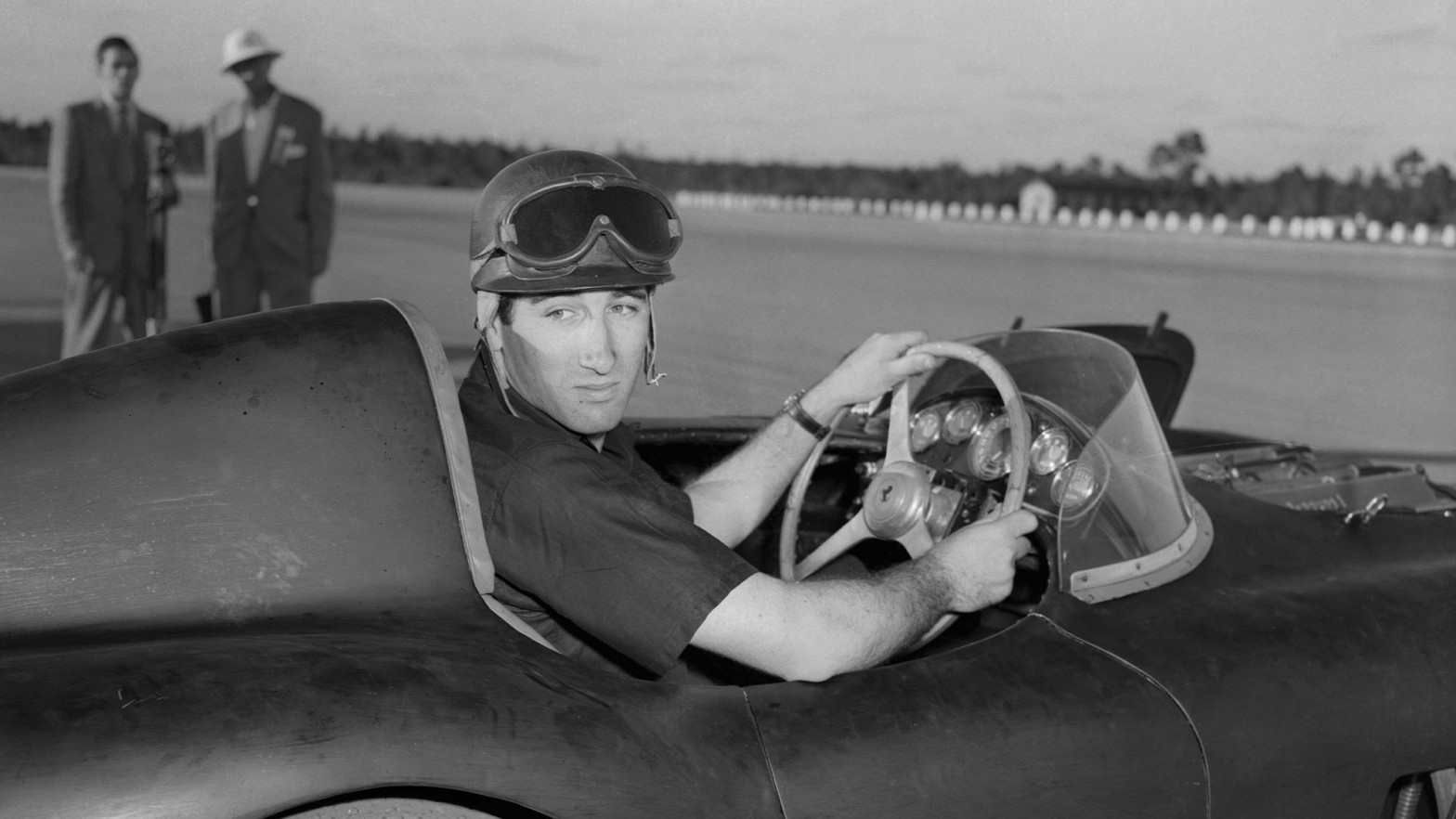
What a fascinating story – unfortunately with such a tragic ending. And only in The Classic Machines do I get a great motorsports story AND get to learn that Marquis stands between Duke and Earl.
LikeLiked by 1 person
Thank you so much. Researching for a post can be fascinating, I have the opportunity to learn a lot.
LikeLiked by 1 person
Rubens, maravilhoso seu post, parabéns e muito obrigado pela referência, forte abraço.
LikeLiked by 1 person
Fico feliz por você ter gostado. Agradeço o elogio, pois vindo de você tem muito valor para mim.
Ficamos em contato.
Grande abraço.
LikeLike
It might add to the credibility of this puff piece if it referred to Brescia rather than Brascia… but who can tell?
LikeLike